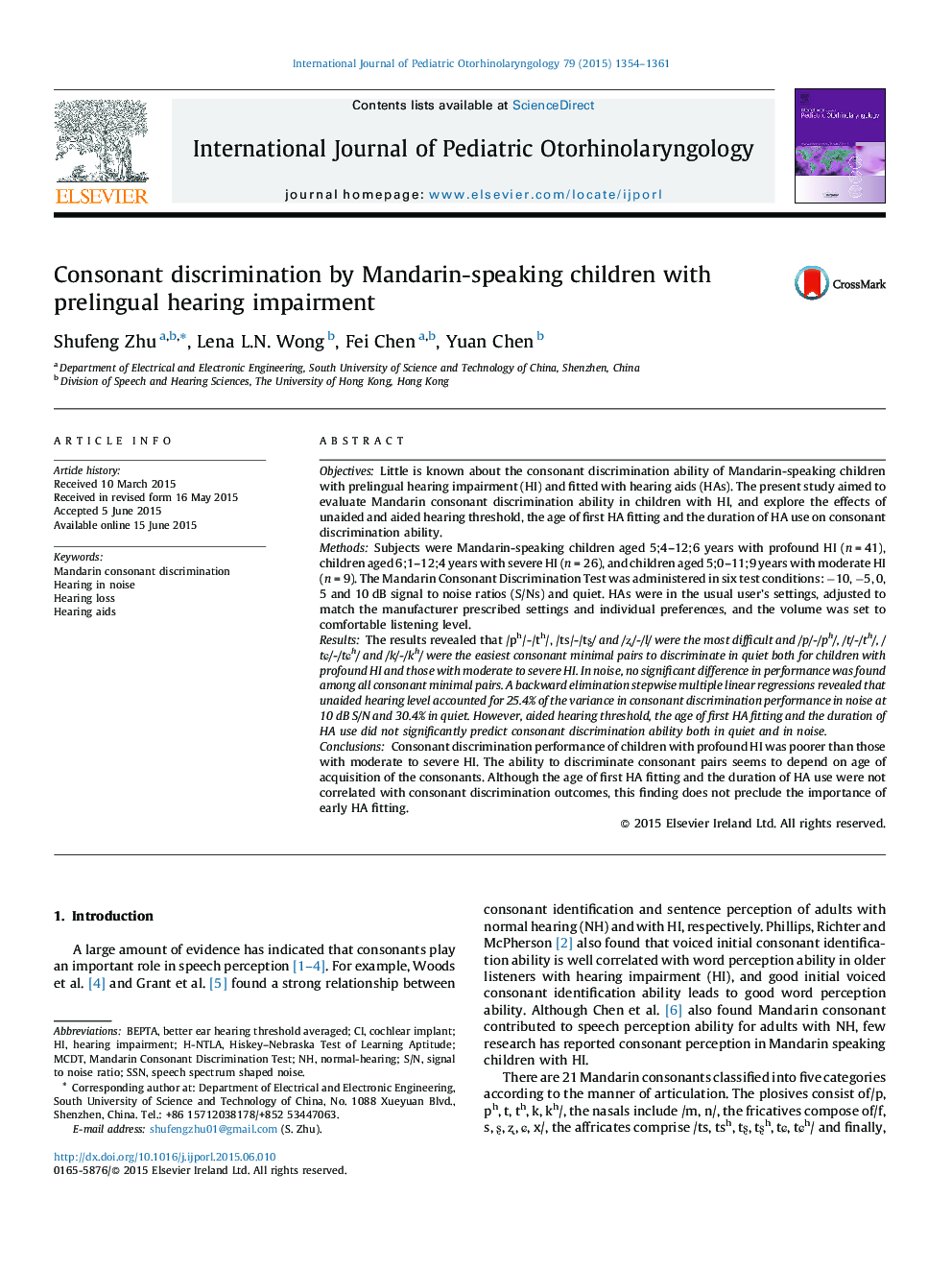| کد مقاله | کد نشریه | سال انتشار | مقاله انگلیسی | نسخه تمام متن |
|---|---|---|---|---|
| 4111680 | 1605993 | 2015 | 8 صفحه PDF | دانلود رایگان |
ObjectivesLittle is known about the consonant discrimination ability of Mandarin-speaking children with prelingual hearing impairment (HI) and fitted with hearing aids (HAs). The present study aimed to evaluate Mandarin consonant discrimination ability in children with HI, and explore the effects of unaided and aided hearing threshold, the age of first HA fitting and the duration of HA use on consonant discrimination ability.MethodsSubjects were Mandarin-speaking children aged 5;4–12;6 years with profound HI (n = 41), children aged 6;1–12;4 years with severe HI (n = 26), and children aged 5;0–11;9 years with moderate HI (n = 9). The Mandarin Consonant Discrimination Test was administered in six test conditions: −10, −5, 0, 5 and 10 dB signal to noise ratios (S/Ns) and quiet. HAs were in the usual user's settings, adjusted to match the manufacturer prescribed settings and individual preferences, and the volume was set to comfortable listening level.ResultsThe results revealed that /ph/-/th/, /ts/-/tʂ/ and /ʐ/-/l/ were the most difficult and /p/-/ph/, /t/-/th/, /tɕ/-/tɕh/ and /k/-/kh/ were the easiest consonant minimal pairs to discriminate in quiet both for children with profound HI and those with moderate to severe HI. In noise, no significant difference in performance was found among all consonant minimal pairs. A backward elimination stepwise multiple linear regressions revealed that unaided hearing level accounted for 25.4% of the variance in consonant discrimination performance in noise at 10 dB S/N and 30.4% in quiet. However, aided hearing threshold, the age of first HA fitting and the duration of HA use did not significantly predict consonant discrimination ability both in quiet and in noise.ConclusionsConsonant discrimination performance of children with profound HI was poorer than those with moderate to severe HI. The ability to discriminate consonant pairs seems to depend on age of acquisition of the consonants. Although the age of first HA fitting and the duration of HA use were not correlated with consonant discrimination outcomes, this finding does not preclude the importance of early HA fitting.
Journal: International Journal of Pediatric Otorhinolaryngology - Volume 79, Issue 8, August 2015, Pages 1354–1361
